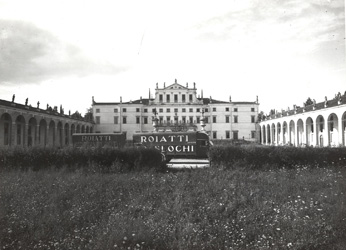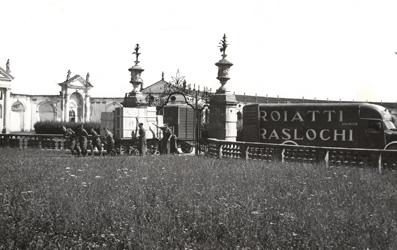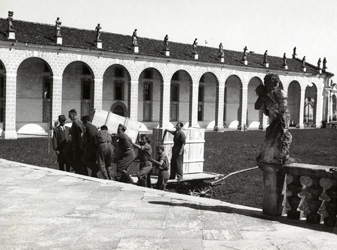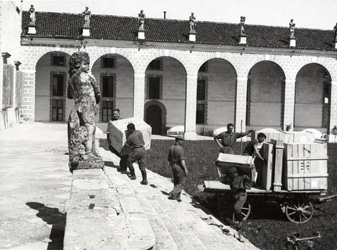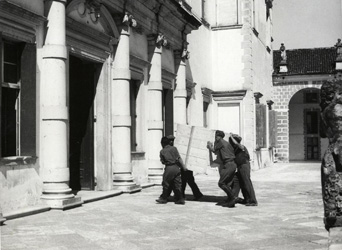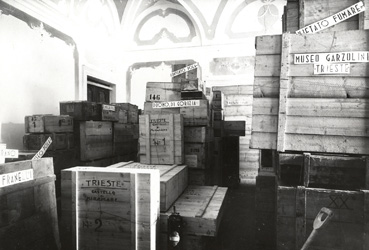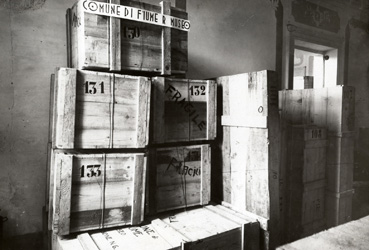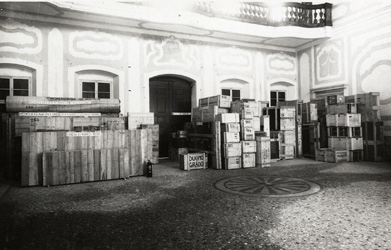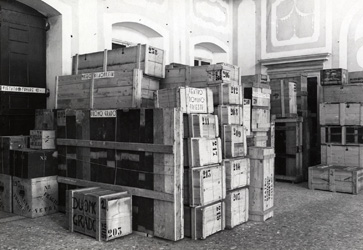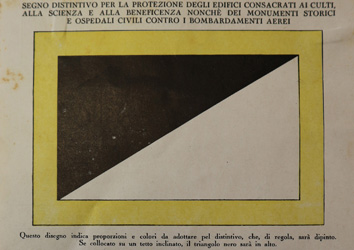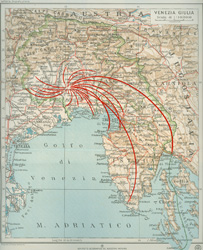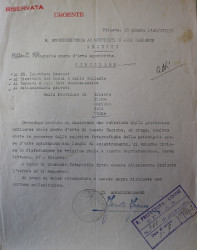The transfer of artworks to Villa Manin proceeded very quickly. On June 8, 1940 the organization of the transport of works of art began.
in his journal Someda de Marco mentioned the local responsibles for the transport to Villa Manin of artworks coming from different areas of the Adriatic Littoral :
| Cividale | Avv. Giuseppe Mariani |
| Fiume | Prof. Remo Fenili |
| Gorizia | Prof. Giuseppe Franzotti |
| Trieste | Prof. Nicolò Rota |
| Friuli (Pordenone, Latisana e Spilimbergo | Prof. Tiburzio Donadon |
On June 13, the first crates from the Convent of Saint Francis of Pula arrived at Villa Manin. In August 1940, there were more than 500 crates in the five halls of the ground floor of Villa Manin, containing works of art coming from the whole Adriatic Littoral area, and belonging to privates as well as to public and ecclesiastical bodies. Many of the artworks were photographed – some episodes of the transfer operations were also photographed, having probably in view propagandistic purposes. When Someda de Marco later described his activities in an essay published in the “Atti dell´Accademia di Scienze Lettere ed Arti di Udine” (1948), he pointed out that the deposit of Villa Manin was an extraordinary “collection of works of art, beauty, and study. If it could have been possible to create an exhibition with all those works of art, it would have been the most varied art exhibition that anyone had ever seen”.
On June 14, 1940 Someda de Marco reported in detail the description of Villa Manin and its internal organization: the building is far from the road, the rooms are interconnected, safe and easily ventilated. All communications with other environments are solidly barred from the inside; the bodyguards of the royal army are placed in the immediate vicinity of the halls. Inside the rooms, there are two reliable custodians, Ernesto Bros and Giovanni Mini, who are ready for every inconvenience and are responsible for the surveillance, the ventilation and the cleaning of the rooms. They are forced to sleep inside the halls, they absolutely mustn´t let strangers enter the halls, or leave the place for any reason. For any problem, they must contact the Director of the centralisation.
At the end of July, Someda de Marco wrote that Inspector Nicolò Rota had delivered the badge for the protection of buildings against aerial bombing. The badge consisted of a rectangle surrounded by a yellow band and divided diagonally into two areas: one black and the other white. It had to be placed on the roof of Villa Manin.
Both the transport of the works of art and their preservation at Villa Manin were managed attentively by Someda de Marco.
One of the recurring problems that the Director of the centralisation had to face was the lack of fuel needed for the numerous travels (no more than 10 litres per month were granted!).
During the war, going to Villa Manin became more and more complicated every day: shortage of means, rigorous restrictions on circulation and difficulties in obtaining permits forced Someda de Marco to travel to Villa Manin by bicycle (sometimes even this was impossible for the shortage of bicycle tires!).
On July 23, 1943, the Minister for National Education thanked all those who had helped in the protection of the cultural heritage during those difficult times. This notice, sent to Supervisor Franco Fausto, was received by Carlo Someda de Marco on July 26, 1943: the day after the end of Fascism.

